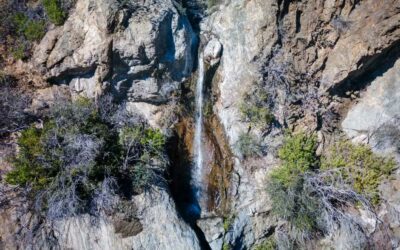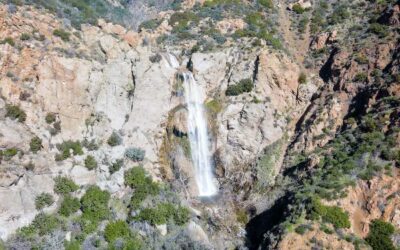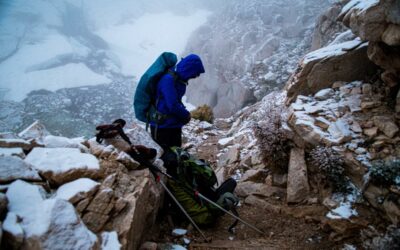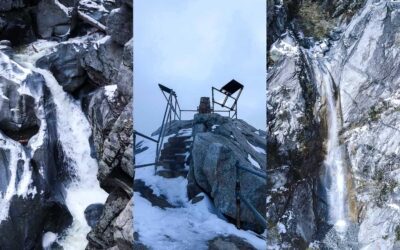There’s no doubt hiking and high elevation go hand in hand. However, high elevations in the mountains are the perfect recipe for unexpected thunderstorms, and where there are thunderstorms there’s lightning.
Here are five guidelines you can follow which can potentially save your life or the life of a loved one if you find yourself in the midst of a thunderstorm on your hike
1. Get to Lower Elevation Immediately
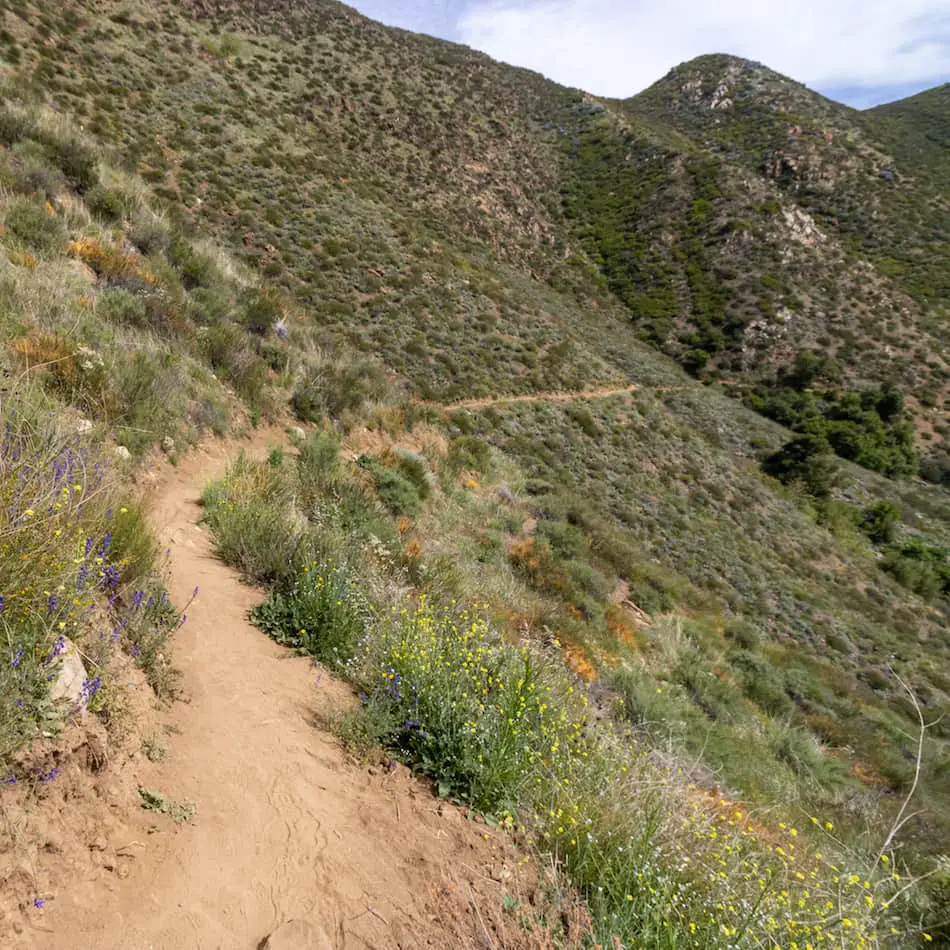
If you’re at the peak when the thunderstorm begins or is approaching, you should start heading down right away.
The reason is pretty simple: the higher up the mountain you are, the more likely it is to be barren and the higher your chances are of being struck by lightning. Lightning is more likely to strike a plateau, ridge, or summit, so get down quickly and safely.
2. Find Shelter
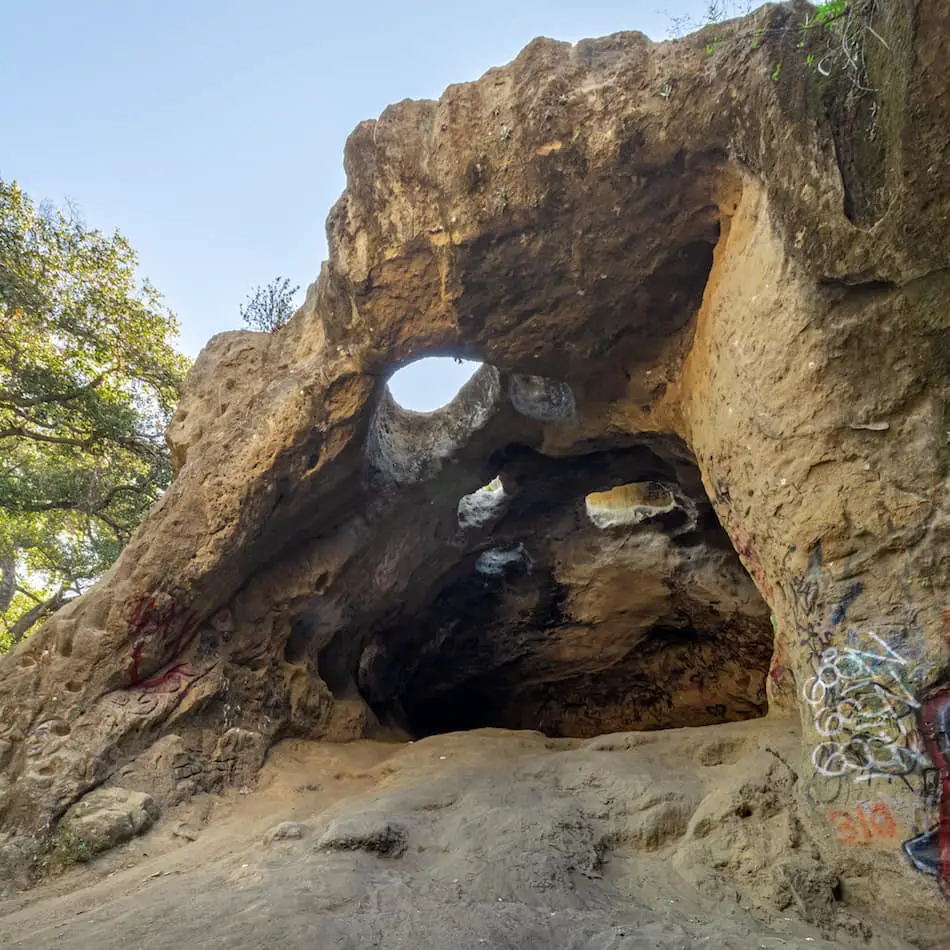
It’s perfectly safe to take shelter in a cabin, your car, or a deep cave, such as the Vanalden Caves in the image above. If you can’t find any type of shelter, look for a depression or valley.
By the way, if you want to see more regarding the Vanalden Caves, click the link here. You would never think these types of caves exist in LA, but they do, and they’re breathtaking.
A low point in the mountains (preferably with dense trees) can also good for taking shelter. Just keep an eye out for flooding if you choose any low-point areas, and keep your distance from large trees.
Shelters you’ll want to avoid include shallow caves and open structures such as picnic pavilions as these are more likely to attract lightning. Also avoid sparsely covered areas including meadows, fields, and large clearances.
Never take shelter under a large tree ESPECIALLY if it’s dry and standing alone.
3. Remove Backpack and Trekking Poles
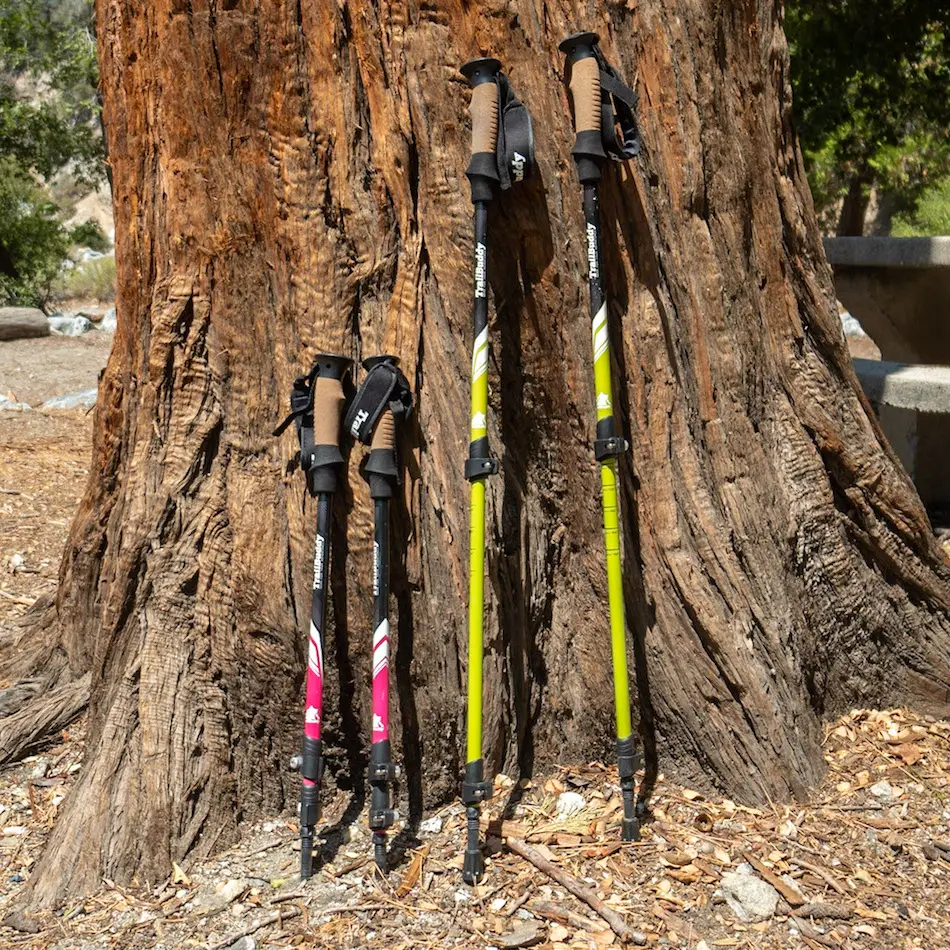
Once you’ve identified your proper shelter, remove your backpack and trekking poles. You don’t have to leave them outside the shelter, just keep them a few feet away, especially if you’re outside such as in a valley or low point that I mentioned in point number 1.
Your backpack and trekking poles won’t attract lightning, but they do conduct electricity, and we definitely don’t want that.
In case you’re wondering, the trekking poles in the image are called TrailBuddy Trekking Poles. We wrote a thorough review after putting them to the test for a year. You can check that out right here. Even though they’re one of the lower priced trekking poles on the market, you’ll be surprised how reliable they are.
4. Spread Out
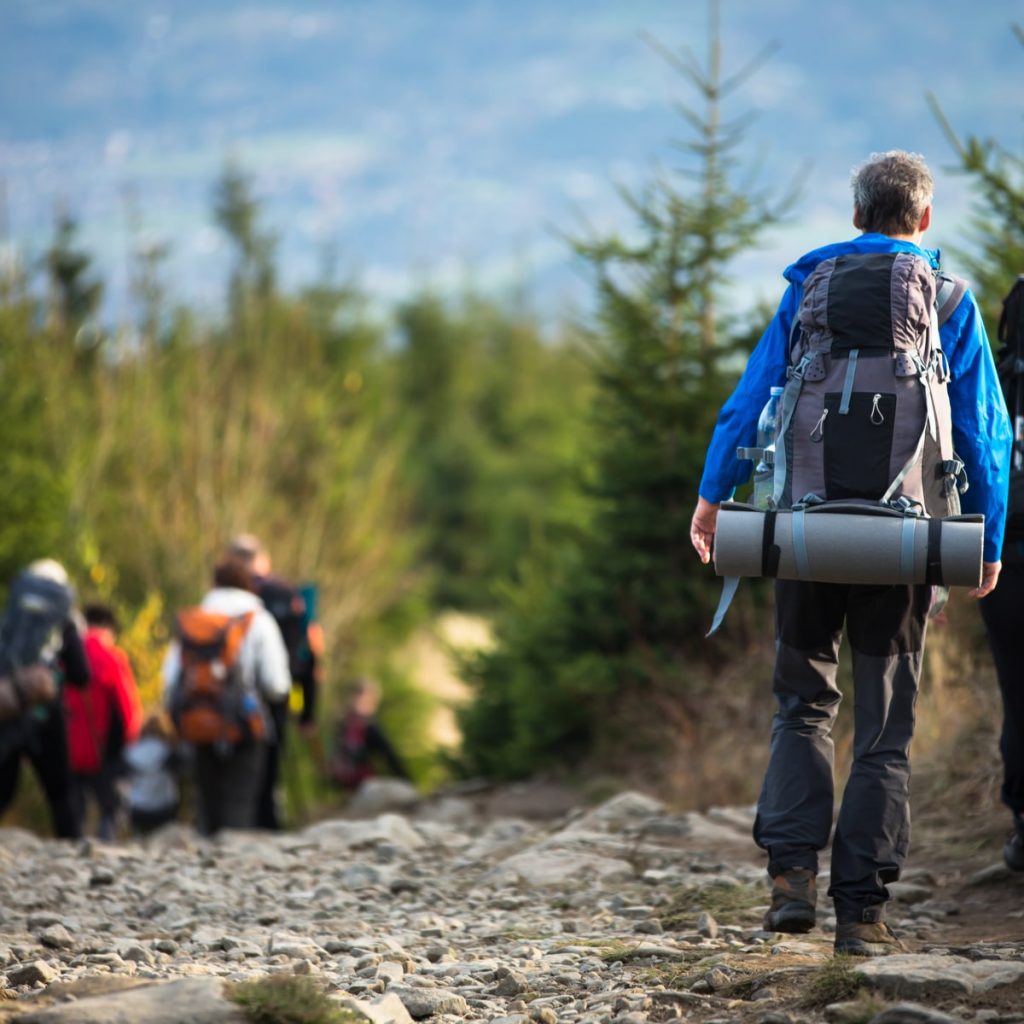
Sometimes it’ll be impossible to find shelter, and the only choice you’ll have is to get moving. If such is the case, you and your group will want to take the following precautions.
If you’re traveling in a group, you’ll want to spread out in order to minimize the chances of lightning striking more than one person.
Keeping roughly 100 feet in between each person should be sufficient. I highly advise stopping every 20 minutes or so to ensure everyone is safe and still connected to the group.
5. Avoid Water and Metal Fences or Posts
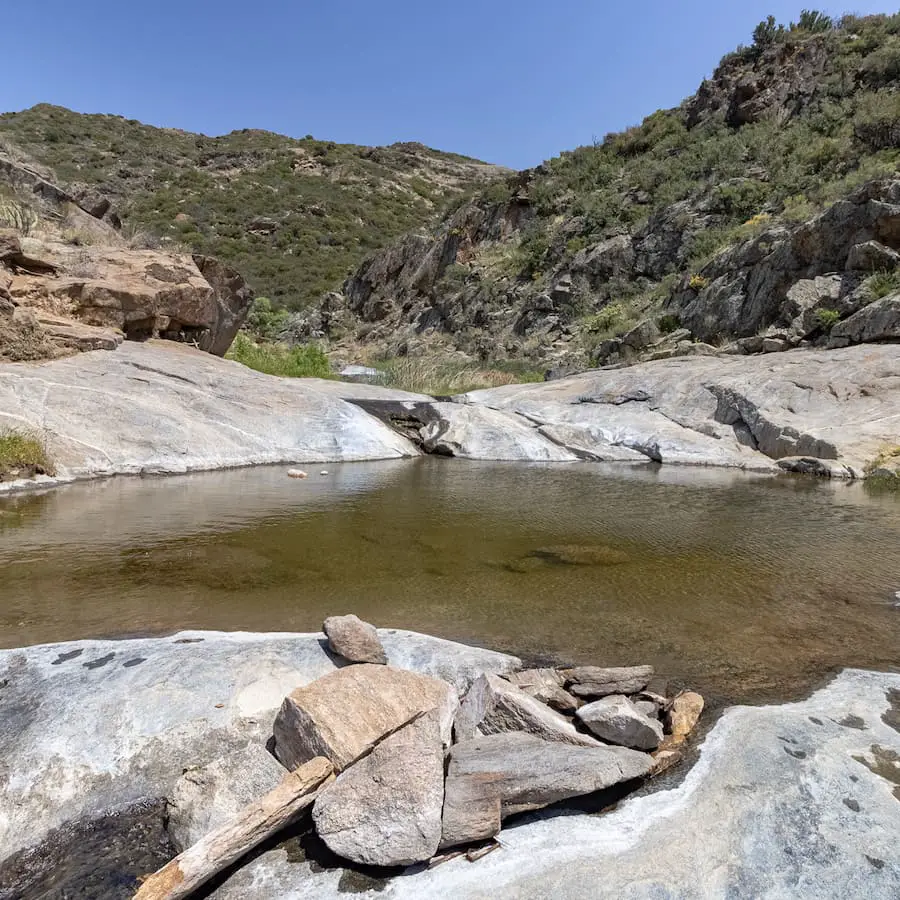
Sorry guys, but this is just not the right time to grab a drink from the nearest swimming hole. As you probably already know, water and metal are two of the best conductors of electricity.
Avoid creeks, swimming holes, metal fences, and posts to minimize the risk of being struck.
The image above is a series of pools and a waterfall called Kitchen Creek Falls located in San Diego County. If you want to see more on that super amazing place click the link here.
It’s okay to take shelter in a canyon in a place like Kitchen Creek Falls. Just make sure you don’t go in the water.
What To Do If Someone is Struck by Lightning
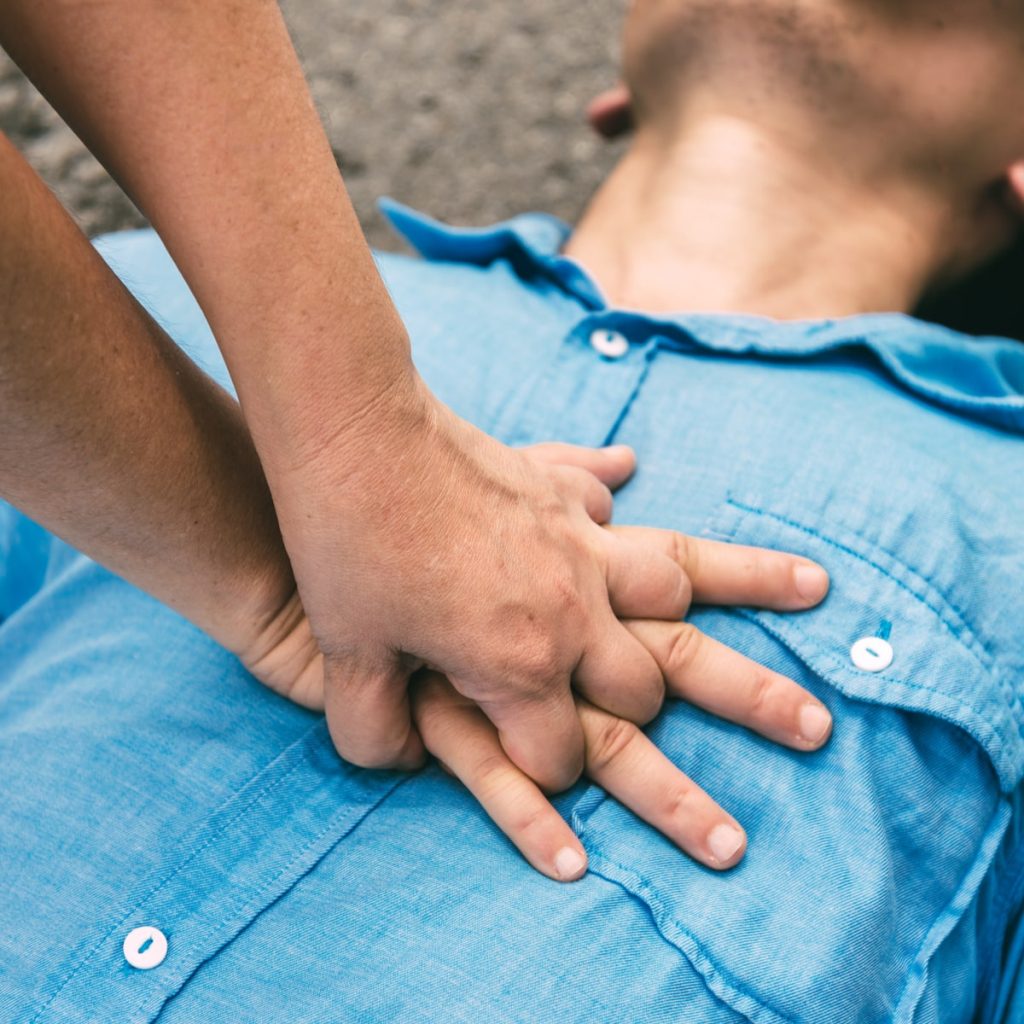
If someone in your group is struck by lightning, you’ll want to proceed in the following manner. Begin by checking for a pulse and breathing.
If the individual is not breathing or doesn’t have a pulse, call 911 if possible and begin CPR immediately.
If more than one person has been struck, treat those that are unconscious first as they have the highest risk of dying.
It’s not uncommon for people to appear dead when they’ve been struck by lightning. However, there’s a good chance of them regaining consciousness once you’ve performed CPR.
There is no danger in touching a person who has been struck by lightning. You will not be shocked yourself. This is a common misconception.
Always be aware of your surroundings when performing CPR in the outdoors. Keep an eye out for wild animals, flash floods, and high winds knocking down branches. If you must, move the unconscious person to a safer area before performing CPR.
How to Detect if You’re in the Danger Zone
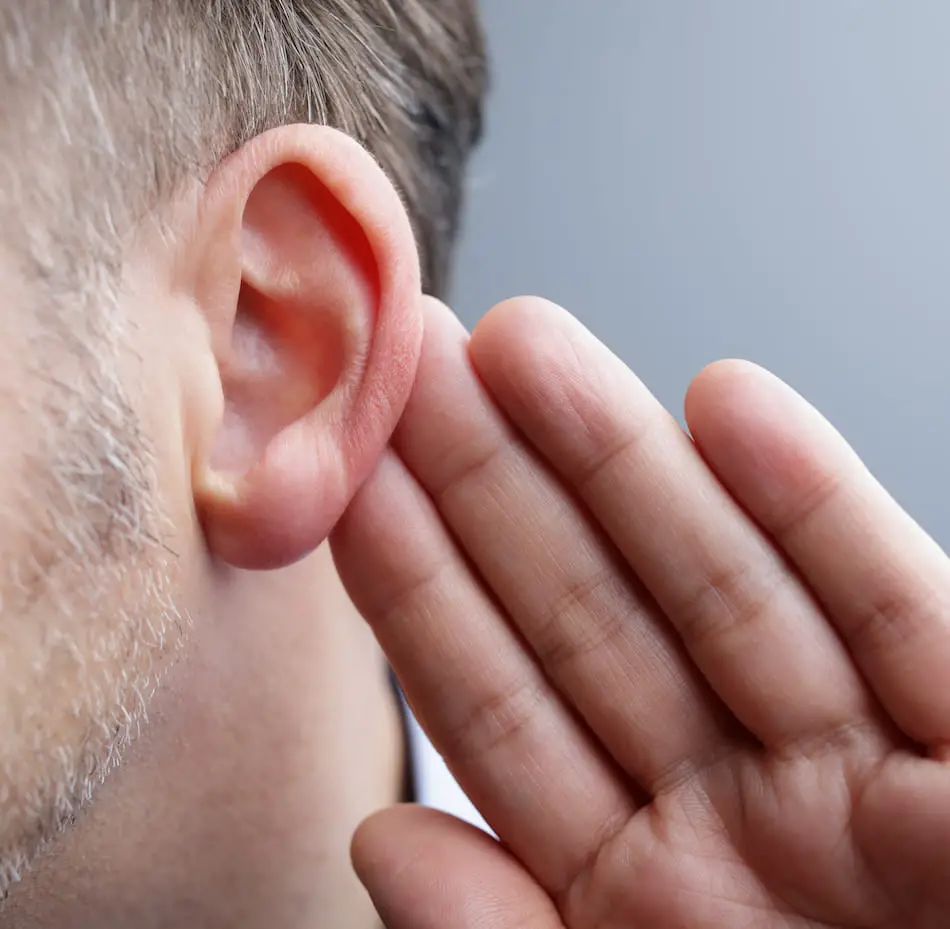
Use this method to detect how far the storm is from your location. When you see a flash of lightning, count the number of seconds until you hear thunder.
If the number is less than 30 seconds, the storm is less than 6 miles / 10km away, which means you’re within striking distance.
Please keep in mind that just because you’re not in the danger zone you shouldn’t take precautions. As soon as you see a thunderstorm in the distance, you should highly consider turning back for your safety and the safety of the group.
The Lightning Crouch
You may have heard of the stance called the lighting crouch. It consists of crouching down on both feet with your head between your knees, closing your eyes, and covering your ears with your hands. It’s been recommended as a last resort type of protection against lightning strikes.
Unfortunately, the lightning crouch is not very effective. Hence, the National Weather Service (NWS) stopped recommending the crouch in 2008. You’ll more than likely still hear or read about it, but just keep in mind it’s no longer suggested by professionals.
Best Ways To Avoid Thunderstorms on Your Hiking Adventures
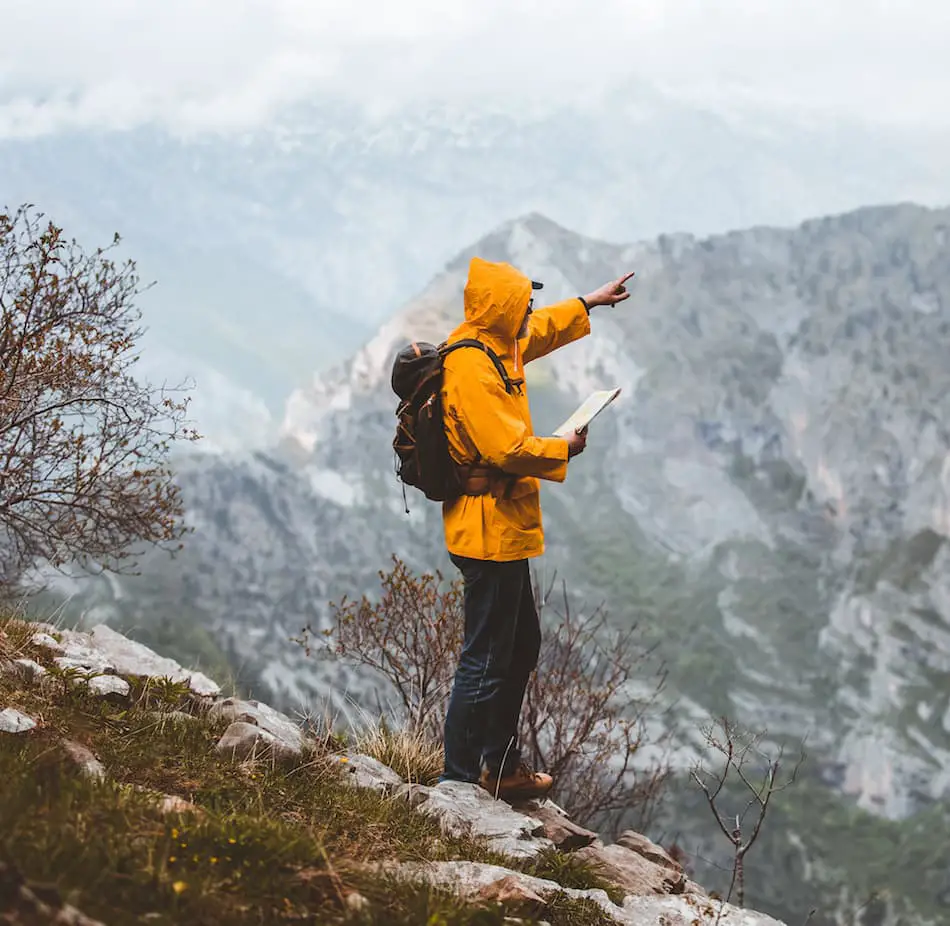
There’s no doubt in my mind that the best way to avoid a catastrophe is to plan accordingly. If you don’t want to find yourself soaking wet and dodging lightning bolts in the mountains, simply follow these tips.
- Check the weather! I know I know, it’s a mind-blowing idea, but you’ll be surprised how many times I failed to check the weather.
- Hike in the mornings. Thunderstorms are most likely to form in the afternoons/evenings. If you’re in and out of the mountains by noon, you decrease your chances of getting rained on.
- Keep an eye on the sky. The weather gods don’t always predict an accurate forecast. Luckily for us, it doesn’t take a genius to spot dark clouds in the sky.
- Have a backup plan. Maybe, if you’re expecting a storm, you can plan out a different trail still within the area, but not so exposed to lightning and rain.
- Last but not least, head back. The best way to avoid a thunderstorm is to head back the second you see it forming. After all, an ambulance ride will cost you about $1000, but walking back to your car….absolutely free.
Other Guides You May Like
Earthquake Falls: Little Tujunga’s Roadside Secret
Total Miles: 0 Best Season: After Heavy Rainstorms Max Elevation: 2200 ft Parking Lot: Turnouts Fit ≈ 15 cars Dogs: Allowed On A Leash Restrooms: Not Available Pics Taken On: Feb 11, 2024 Earthquake Falls is a roughly 70-foot roadside waterfall located in Santa...
Escondido Falls: Best Malibu Waterfall 150 Ft High
Total Miles: 3.49 Time: 1.5 Hrs Difficulty: Easy Best Season: Spring Elevation Gain: 507 ft Max Elevation: 328 ft Type of Trail: Out & Back Parking Lot: Fits ≈ 15 cars Dogs: Allowed On A Leash Restrooms: 1 Porta Potty At The Parking Lot Trail Popularity: Extremely...
This Gear For Winter/Snow Hikes Is Non-Negotiable
Although stunningly beautiful, venturing into the mountains after a snow storm can be extremely dangerous. Avalanches, getting lost, hypothermia, and frostbite all pose a real threat. Here in Southern California, multiple hikers go missing every year at Mt Baldy, a...
30 Fun Winter/Snow Hikes In Southern California: By County
What's up guys. Since we got a really good dump a few weeks ago, I compiled a list of many, but certainly not all, SoCal hikes which get snow almost every year. If you plan on getting out there, remember to always check the weather forecast before stepping on the...
Ferndell Nature Trail To Griffith Observatory Loop
Total Miles: 2.75 Time: 1-1.5 Hrs Difficulty: Easy – Moderate Best Season: All Year Elevation Gain: 632 ft Max Elevation: 1140 ft Type of Trail: Loop Parking Lot: Street Parking Dogs: Allowed On A Leash Restrooms: Available At The Observatory Trail Popularity: Very...
Riverside Trail To Vista Viewpoint: Picturesque LA Views
Total Miles: 2.46 Time: 1 Hrs Difficulty: Easy - Moderate Best Season: All Year Elevation Gain: 407 ft Max Elevation: 1062 ft Type of Trail: Out & Back Parking Lot: Fits ≈ 50 Cars Dogs: Allowed On A Leash Restrooms: Available At The Parking Lot Trail Popularity:...


